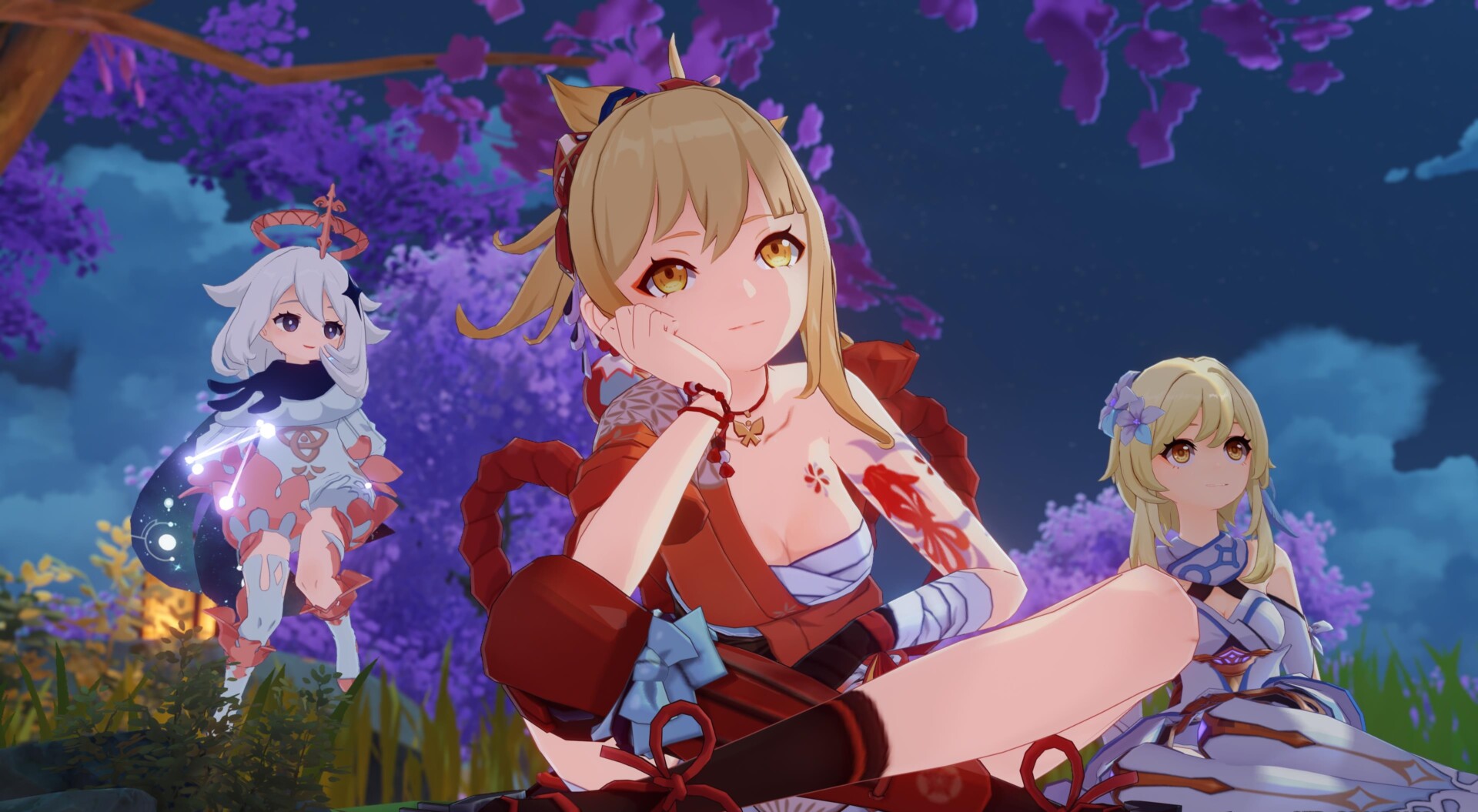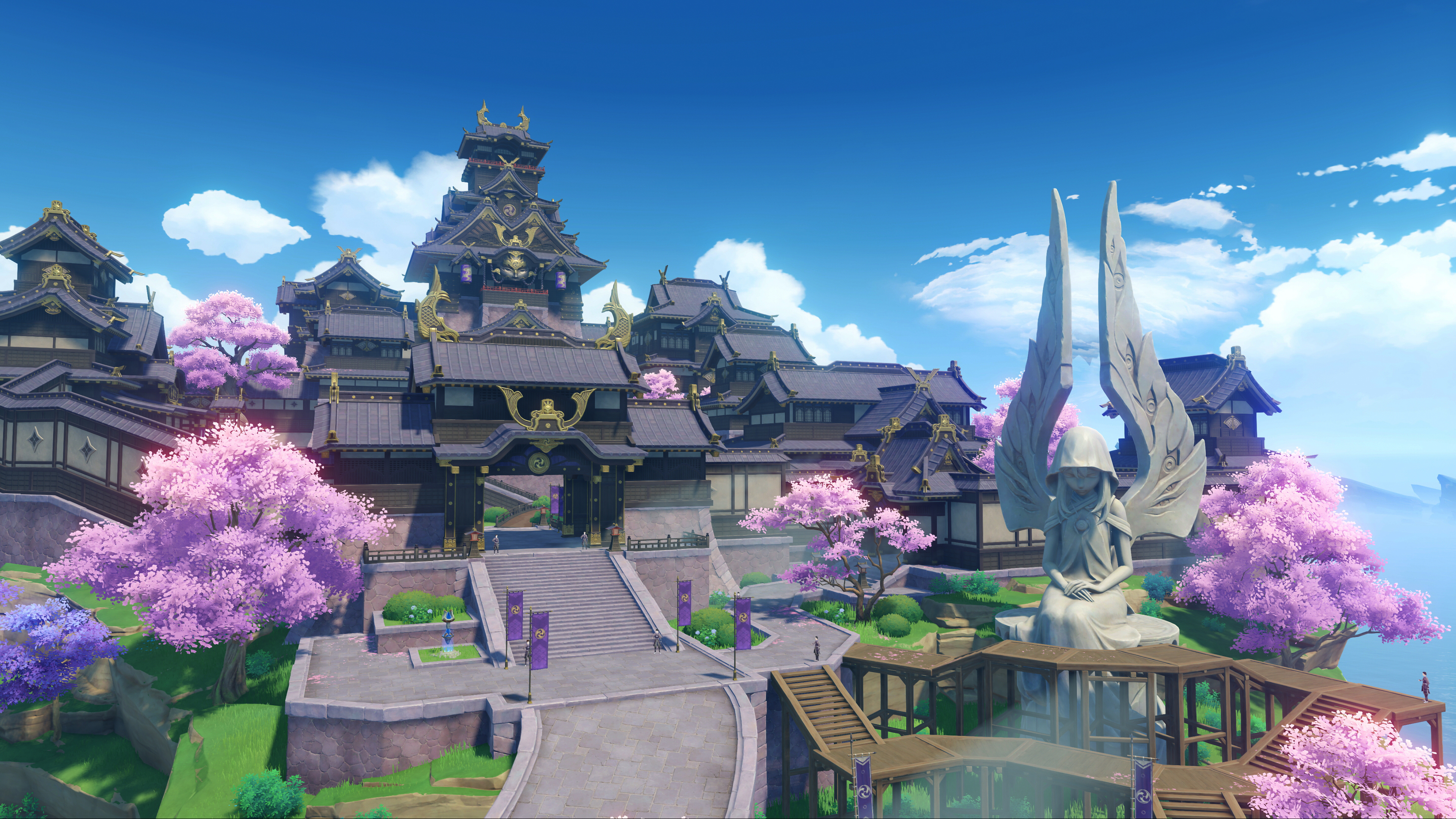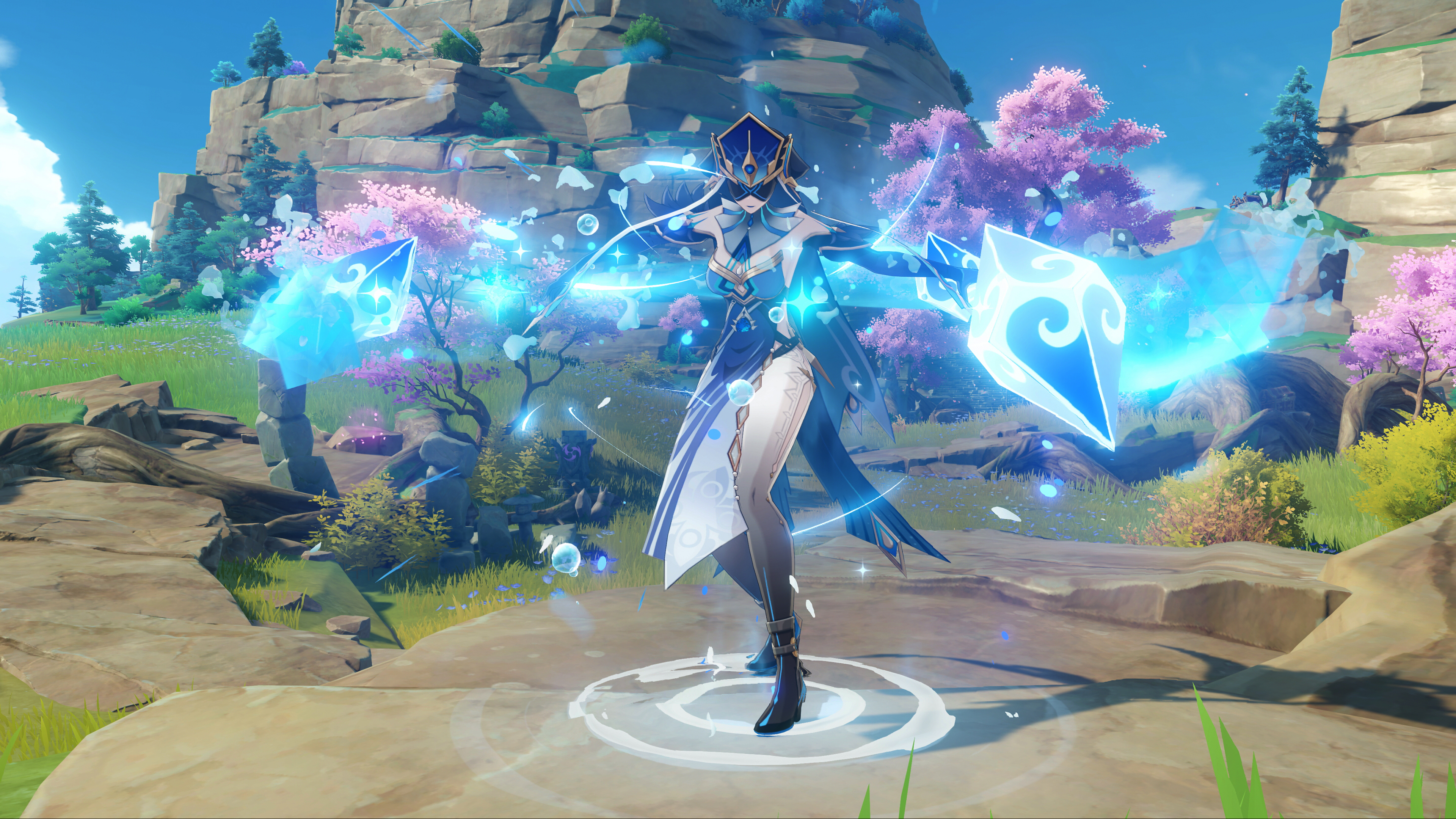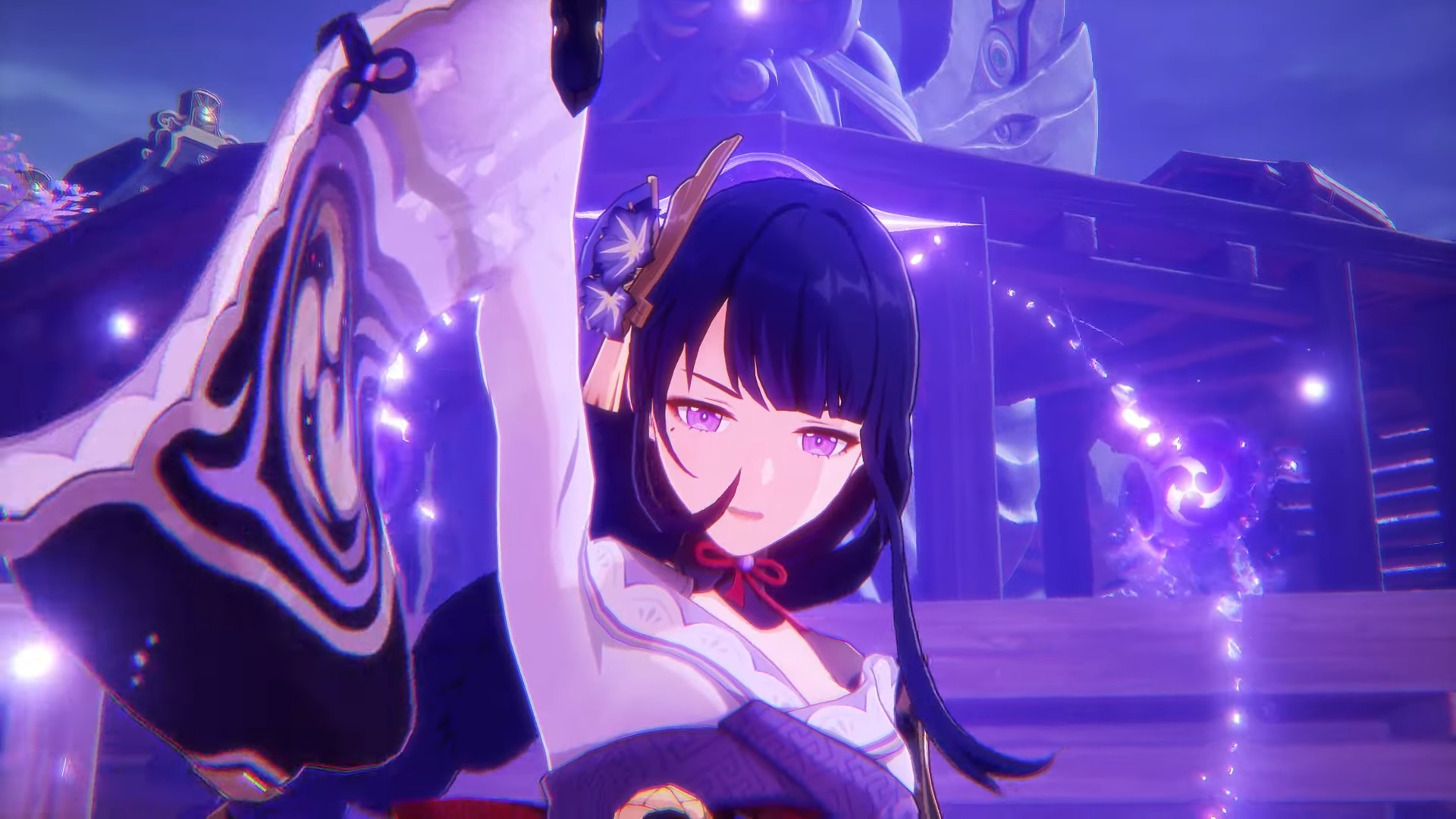With Inazuma, Genshin Impact has outgrown its Breath of the Wild reputation
Genshin Impact is leaning into what makes it unique and fun to great effect

For the past 10 months, I've played Genshin Impact every single day in one of two ways. I'll either hop on for an hour or so just to clear my daily challenges and events, or I'll play it for hours as I would a traditional open-world game. After update 2.0 added the Inazuma region on July 21, I've played almost non-stop for weeks. I'm still playing heavily, which is something I haven't really been able to do since the game launched and I was first dropped into Teyvat.
Beyond an MMO-grade expansion, Inazuma feels like a major creative milestone for Genshin Impact. Rather than emulating the greats of its genre, it's now proudly leaning into what makes it unique and fun to define its own style. It's so much more than a gacha game that looks a bit like The Legend of Zelda: Breath of the Wild – a game that developer MiHoYo unabashedly took pointers from, and which Genshin Impact was repeatedly compared to upon release – and Inazuma has hammered that home in some big ways.
A world of blues and purples

For one, Inazuma is just gorgeous. Proudly riffing on Japanese motifs and specifically Ghibli colors, the new island region delivers a pastel sea of blues, greens, and purples. Swaying sakura trees pepper islands of striated rock, weathered statues guard misty forests, and luminescent ores and flowers light caves like nature's little torches. The vistas are especially staggering. An enshrined tree grown in the likeness of a fox overlooks shattered chunks of earth suspended hundreds of feet high. The electro element courses through everything mechanically and visually, setting Inazuma apart from Mondstadt and Liyue in loud, vibrant ways.
It's more than the art, though. As an area to explore, Inazuma is more inventive than Mondstadt and Liyue. It has an organic feel to it that makes its many secrets more exciting to find. The moment it really clicked for me came in the depths of a dungeon on the northern tip of the first island. I'd just started a side quest that challenges you to destroy five scattered barriers by solving some environmental puzzles. At the time, I'd only found one of these and wasn't even aware that there were four more still to come.

In my wanderlust, I happened upon a half-sunken crypt packed with new enemies and puzzles. After nearly an hour of spelunking, I found a way to drain the water and delve deeper. To my surprise, this revealed one of the barriers for my quest. Ecstatic, I solved it and quickly reported back to the quest giver, Kazari, only to crack another barrier and unlock the next step of the quest. As it turns out, my random dungeoneering had let me complete one third of the final quest step early. I now had two barriers left to find, and more motivation than ever.
This was a small thing, but it means a lot to me when an open-world game doesn't railroad you into doing things in a specific way or order. It speaks to the developer's trust and intent when a game encourages and rewards sequence breaking, even in a minor way. Inazuma isn't a thrill ride and Genshin Impact isn't a fussy director. You aren't on a rail watching an arranged sequence of cool things. You're meandering through a fantastical country in search of treasures and answers, and the experience reflects that. Quests give you direction, sure, but the bulk of exploration comes down to following your impulses. The path forward is yours to define. This is where the game can really flex its world and draw distance: if you can see it, you can go there.
There's such an impressive variety of things to find along the way, too. A lot of them boil down to ways to spawn treasure chests, but the mechanisms are fun in their own right. Electric grappling hooks and crystal tethers liven up the usual time trials and combat challenges, and Inazuma's puzzles are much more sophisticated than those of other regions. There are also enemies and resources everywhere you look, giving it a denser and lived-in feeling, to say nothing of the satisfaction of collecting new stuff. Almost every day, I run through the map to farm materials for new and upcoming characters, and almost every day, I find something I've missed. Every chest, quest, or collectible is a small but fittingly electrifying discovery.
Weekly digests, tales from the communities you love, and more
Let me hear your war cry

Beyond an inviting world, Inazuma has served up some encouragingly dramatic story beats. We've defeated a legendary dragon and an ancient god already, but with few exceptions – hello Dainsleif arc, I miss you – Genshin Impact's story has felt fairly slow-going and low-stakes. The first two arcs largely boiled down to palling around with the anemo and geo archons, but this time, we're directly going against the wishes of the electro archon, the Raiden Shogun, who I'm still just going to call Raiden. We're a wanted foreigner in a closed country fighting a tyrant with the help of embattled rebels. Now that's more like it.
This opposition comes to a head in two story moments which, for my money, totally eclipses everything before them. In one, we actually cross swords with Raiden in a bid to save our new friend Thoma, a charismatic rogue who always seems to know a guy. This was one of the most exciting cutscenes so far, which is saying something after the spectacle of slaying the aforementioned god. I especially love that, after this encounter, guards will bar you from coming near the palace in Inazuma city. They'll bark about the bounty on your head on sight, forcing you to retreat. This is functionally just an invisible wall, but it weaves the story into the world in a noticeable way. You're a criminal now, get used to it.

Later on, we join the rebels in a larger battle featuring several new and returning characters, from Beidou and Kazuha to Kokomi and Kujou Sara. Characters are the lifeblood of Genshin, and Inazuma's story incorporates more of them in a significant way rather than relegating them to side quests or bit parts. Not that I'm knocking Inazuma's side quests, mind you. It was a treat to spend some quality time with Ayaka and Yoimiya, in particular. These quests not only show us different sides of Inazuma, but also do a great job of characterizing the girls themselves.
Inazuma had a lot to live up to. For one, it arrived just as Genshin Impact's usual patch rotation was starting to get truly stale. The short-lived island adventure of update 1.6 was a great snack, but it was clear the game needed something more drastic and permanent. With MiHoYo apparently planning to add one region annually, Inazuma was also positioned as the test of how impactful a new region can be. Players wanted to know if one a year would be a sustainable and fun schedule.
I'd say Inazuma's gotten top marks so far, and so far is putting in work there. We're just three islands deep into the region, with three more still to come. So as it approaches its one-year anniversary, Genshin Impact finds itself in the rare and coveted position of a live service game on a high note – free to try new things instead of constantly being pressured to fix hot button issues. No, it's not perfect, but it's safe to say it's shattered the expectations of players who idly tried it looking to maybe fill a Breath of the Wild-shaped hole. And if the remaining Inazuma islands are on the level of what we've seen so far, we're in for several months of high notes at least.
Genshin Impact Thunder Sojourn | Genshin Impact 2.0 | Genshin Impact Inazuma region | Genshin Impact Memento Lens | Genshin Impact Sakura Bloom | Genshin Impact Destroy Barriers | Genshin Impact Aloy character

Austin has been a game journalist for 12 years, having freelanced for the likes of PC Gamer, Eurogamer, IGN, Sports Illustrated, and more while finishing his journalism degree. He's been with GamesRadar+ since 2019. They've yet to realize his position is a cover for his career-spanning Destiny column, and he's kept the ruse going with a lot of news and the occasional feature, all while playing as many roguelikes as possible.


